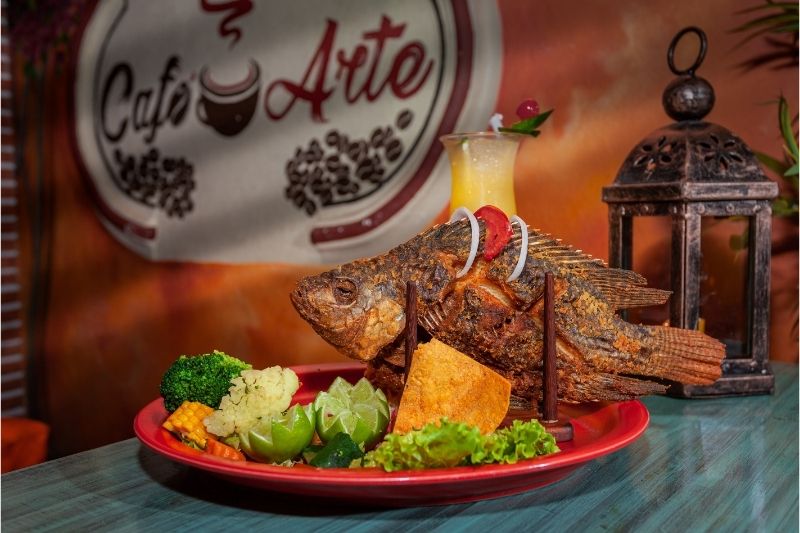How to Make Your Food Presentation on Point

If you are involved in the food industry, you are well aware of the fact that food psychology involves more than just the perfectly cooked steak or the freshest ingredients. There are tons of different factors that play into what we classify as a “perfect” meal or dining experience. For example, some are impressed by the food presentation, vast use of colors, while others are more intrigued by plating.
While the average person may not notice such small intimate details, some psychological studies show there are preferences when it comes to food presentation.
Regardless of whether you are graduating culinary school to start a Michelin restaurant, or you just want to host a successful dinner party that your friends rant about for years to come, the article below is meant to provide you with actionable tips for food presentation.
1. Choose the Perfect Tableware
The perfect tableware set can get the ball rolling regarding food presentation. It is likely one of the first things that people will notice. For example, if you were to serve a filet mignon on a styrofoam plate, you aren’t as likely to get the same “wow” factor as you would if you plated the steak on a sizzling cast-iron suspended in nicely stained wood.
Largely, the difference between red vs. blue, or square vs. rounded plates could make all the difference in presentation. Take your time and do your due diligence to find the perfect tableware.
2. Create Layers
Experimenting with different layers and heights can help you add dimension to your plate. If you are plating a lot of individual ingredients, this can be a good way to avoid the appearance of too much food or incidentally overcrowding the plate in general.
Try to avoid more than three or four separate layers though. The bottom layer is perfect for sauces or purees. The middle layer is ideal for the central most important aspect of your dish like your protein. The top layer is perfect for the final touches like garnishes or side dishes.
3. Utilize Plating Tools
The right plating tools can make all the difference in how aesthetically pleasing your presentation is. From preparation to execution, there are a variety of tools to consider — for example:
-
- Sauce spoons and brushes: These tools can help you with brushing a sauce across the base of a plate, or artistically drizzling a sauce over the top of a dessert;
- Garnish kits: Having little ramekins inside a garnishing kit is the best way to keep your garnishes immediately accessible. You can generally fill them with ice to keep them fresh and they often come with different extras like tongs;
- Tongs and spatulas: Tongs and spatulas are great tools for transferring your food from the pan to the plate. They help you keep excess oils and drippings off the plate by avoiding the classic pan dump;
- Skewers: Skewers are the perfect way to keep a big, juicy burger together or to creatively and elegantly communicate steak temperatures. Additionally, custom skewers can help you individualize your presentation with your logo or restaurant name;
- Squeeze bottles: If you are someone who uses a variety of different sauces, squeeze bottles with labels can help you stay organized while simplifying sauce application.
4. Pick a Plating Style
Believe it or not, there is more than one way to plate your food — and studies show that food orientation is important to consumers. Fear not, there are only three primary plating methods:
- Classic: Classic — or traditional — plating is the most common plating method. Think of it as a clock. Protein is at 6 o’clock, carbs are around 11 o’clock, and vegetables are around 2 o’clock;
- Landscape: Landscape plating gets its name from the linear approach. Foods are prepared long and left intentionally spread low;
- Free-Form: Free-form is similar to abstract paintings. It is more of an art than a science.
Your plating style should depend heavily on the type of food you are serving. To elaborate, it wouldn’t be very appealing to plate your tacos using the free-form style.
5. Smaller Servings
There are several studies analyzing small vs. big serving sizes. One study claims that small portions taste better and are more satisfying — and many tend to agree with this approach. Err on the small side when creating your portion sizes for each element included in your dishes.
6. Garnish
Small intimate details like garnishes can be what takes your presentation from good to great. Whether edible like seafoam or purely aesthetic garnishes like a drink umbrella, garnishing can help you take things up a notch. For the sake of your food-expos sanity, it can be good to have a garnish key handy that shows what type and where a garnish goes on each plate you serve.
7. Use Colors Wisely
Too many colors can be overwhelming and too few can come across bland. You want to find the perfect balance between too much color and not enough. You want to pick colors that pair well together, but a hint of contrast is always a great idea as well. Some colors go well together while others do not.
Be sure to consider all colors involved — even the grill marks.
Final Thoughts
There are quite a few different considerations for food presentation. Ultimately, what works well for some may not work for others — and sometimes simple is the best game plan. Make sure that your food presentation is on-brand for your restaurant or the look you are going for, and practice. Picasso painted his infamous “weeping woman” over 30 different times. Trial and error is the best approach towards crafting the perfect food presentation.











Leave a Reply